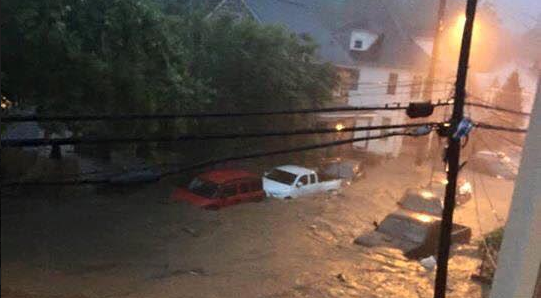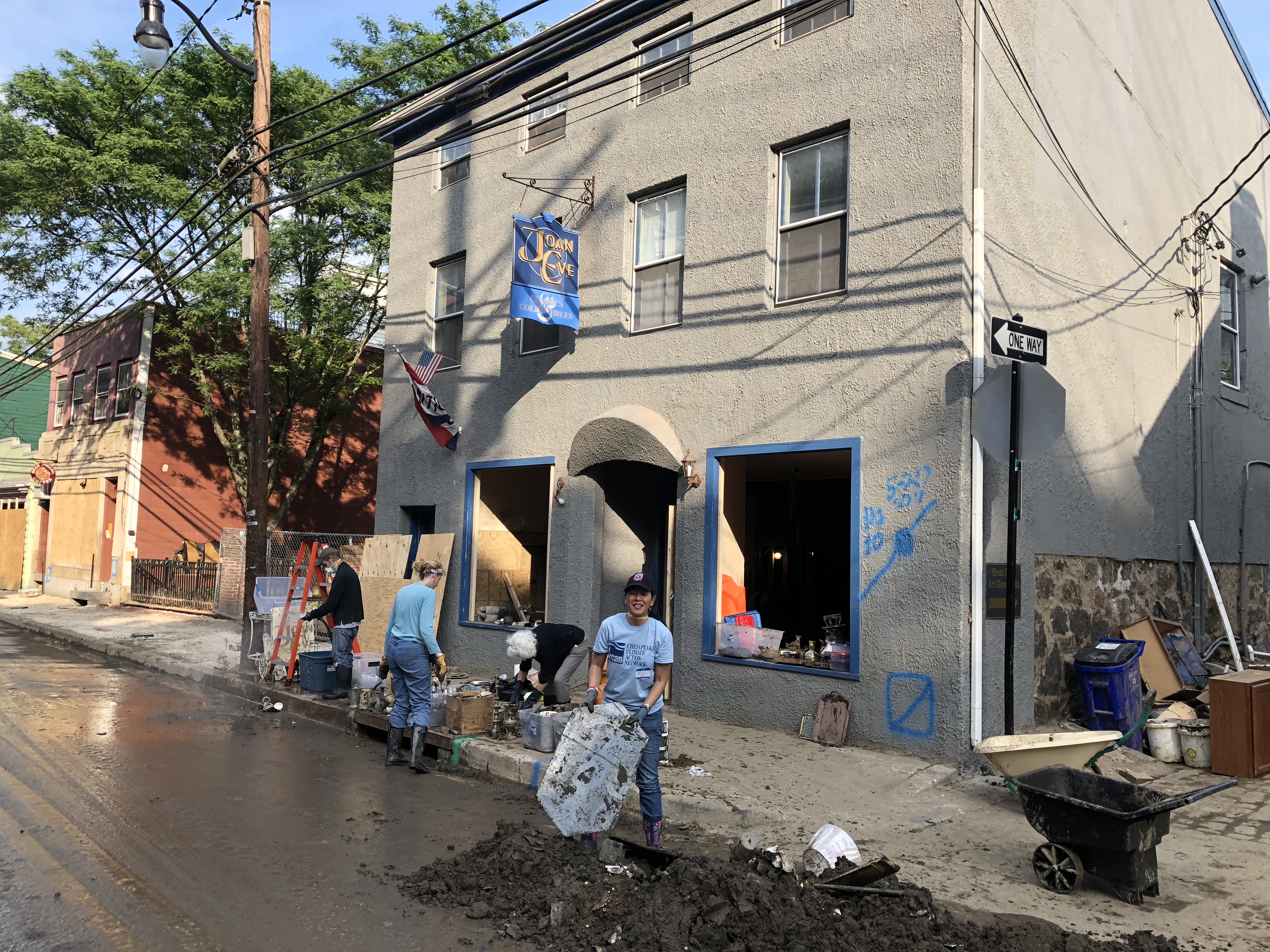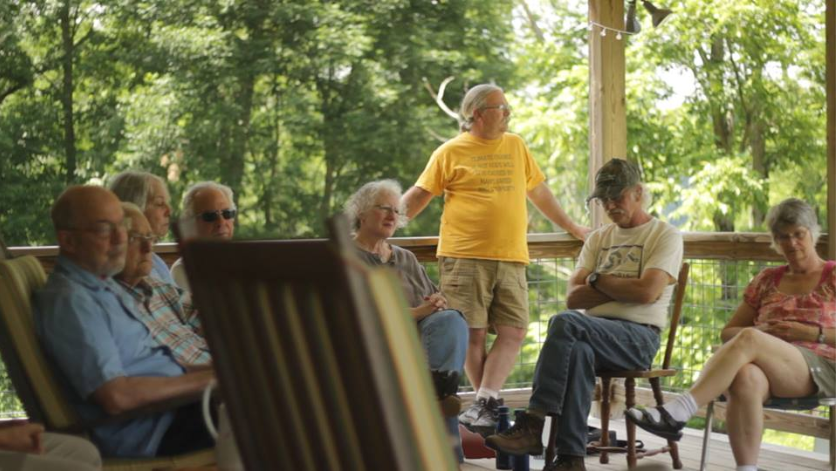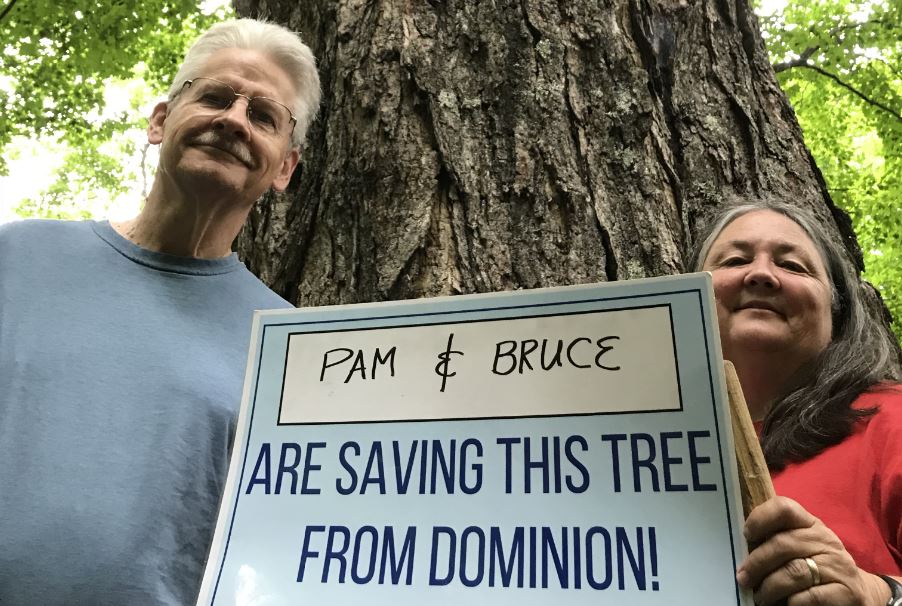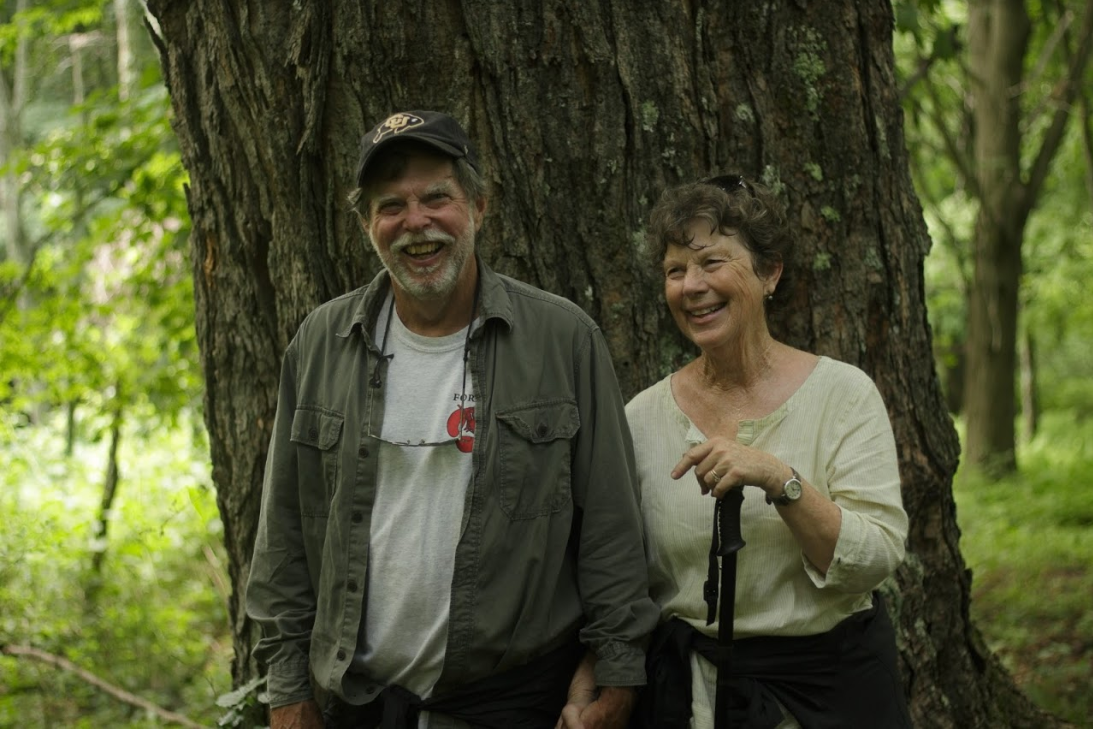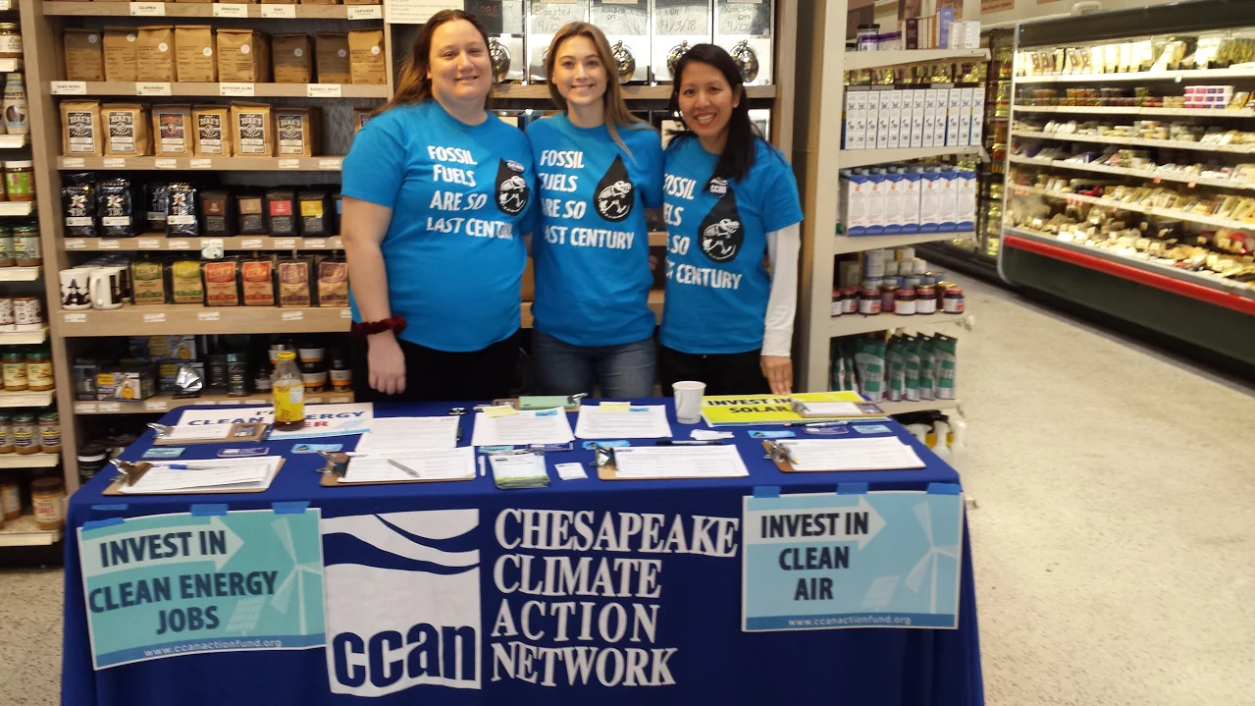 It’s been raining heavily lately where I live in Hyattsville, Maryland. In the week of June 23rd, it rained almost all week. Couple weeks ago, while on the metro, I received a warning on my phone that there would be a flash flood in my area. So I called my mom and told her to stay alert.
It’s been raining heavily lately where I live in Hyattsville, Maryland. In the week of June 23rd, it rained almost all week. Couple weeks ago, while on the metro, I received a warning on my phone that there would be a flash flood in my area. So I called my mom and told her to stay alert.
While I knew it would rain a lot, I hoped it would not be as much as in Ellicott City. Just a couple months ago, this city faced life-changing floods in a devastating climate change event. It started raining in the old historic city on May 27 around at 3:15 pm. It continued on raining and raining for days, until the streets of Ellicott City were flooded with strong rushing waters. Cars were pulled away by the waters. The floods destroyed and damaged countless stores, homes, restaurants, and even one person’s life.
 During the floods, a woman named Kate Bowman was in need of safety from her flooded store — along with her cat. She was on a window, screaming and ready to jump out. At that moment, National Guardsman, Eddison Hermond, noticed her and without thinking twice he started to try and help. He told Kate to calm down, just as he said that, according to Kate, he slipped and the rushing waters took him. His body was found two days later.
During the floods, a woman named Kate Bowman was in need of safety from her flooded store — along with her cat. She was on a window, screaming and ready to jump out. At that moment, National Guardsman, Eddison Hermond, noticed her and without thinking twice he started to try and help. He told Kate to calm down, just as he said that, according to Kate, he slipped and the rushing waters took him. His body was found two days later.
This isn’t Ellicott City’s first time experiencing a devastating flood. Just two years ago, the city was deluged with 6.6 inches of rain, again damaging stores, restaurants, and homes. The 2016 flood killed two individuals. They were found in their cars on the Baltimore Side of the river.
Both the floods in 2016 and in 2018 were ”one-in-a-thousand year” rain events — meaning the rain was so intense that the chances of this happening should only happen once in a thousand years. At least in a normal world.
But we’re not in a normal world. We are now living in a world that has been changed by global warming. And the main factor of the problem is us. We burn fossil fuels like oil and gas, which stay in the atmosphere and make it so heat can’t escape from the Earth — much like a greenhouse, which is why they are called greenhouse gases. Because of that, we make the Earth warmer each year. The warmer the Earth is, the more water gets evaporated. And the warmer the air is, the more water it can hold in its clouds. The more evaporation and clouds, the more rain and floods. Basic science!
 While I have never experienced something just as damaging as Ellicott City, I have lived through floods. In 2015, my family moved to our first house in Hyattsville from our apartment. One night at 11:00pm it started raining really hard. We had been told by our new neighbors that water would flood their basement when it rains really hard, so my sister and I woke my parents up and we went to our basement to check. We checked out the door that goes to the backyard to see if water was coming in. There was nothing. But just as we turned around to go back to sleep I see water flowing in under the door. We were completely unprepared.
While I have never experienced something just as damaging as Ellicott City, I have lived through floods. In 2015, my family moved to our first house in Hyattsville from our apartment. One night at 11:00pm it started raining really hard. We had been told by our new neighbors that water would flood their basement when it rains really hard, so my sister and I woke my parents up and we went to our basement to check. We checked out the door that goes to the backyard to see if water was coming in. There was nothing. But just as we turned around to go back to sleep I see water flowing in under the door. We were completely unprepared.
Climate change affects us even if we don’t see it. We are the cause of climate change. We have damaged the ocean waters, forests, even the air. This cannot continue on. If we don’t act now then the future generations of 100 years from now probably won’t even know what a polar bear is!
Luckily, we are not helpless in this fight against climate change. You can take action today by signing CCAN’s petition in Maryland to move away from fossil fuels by doubling wind and solar power. This will put us on track to achieve a future powered by 100 clean, renewable energy, and livable streets. And, hopefully, no more flooded basements!
Featured Imaged from: Flicker User Todd.
The Ellicott City floods: What was salvaged, what was lost
Coming together in the face of disaster
By Liz Lee, former CCAN Director of Maryland Volunteer Outreach
With streams converging into the Patapsco River, Ellicott City, a town built on the river has been no stranger to flooding. After the historic July 2016 flooding, the community came together to rebuild the downtown — to rebuild their businesses, their homes, their lives. On May 27th, residents and business owners of Ellicott City were hit once again by another historic devastating flash flood. They’ve only just re-opened their doors.
At CCAN, we wondered what can we could do to help this community during this disaster. More importantly, what could we do to push for stronger climate change policy in Maryland so this would not happen again to Ellicott City and other vulnerable communities. I was touched by my experience at Ellicott City following the May flooding — I saw a community come together once again.
Last August, my intern, Gaby, and I business canvassed the downtown area of Ellicott City to gather endorsements in support of the Maryland Clean Energy Jobs Initiative. We heard heartbreaking stories one after the next as owners showed us the height of the watermarks on their walls from the 2016 flood. I met the local hero of a toy shop on Main Street — as the last link of a human chain, he pulled a woman out of her car which was immediately swept away in the flood waters on the doorstep of his store. In the end, 20 local businesses signed our resolution for a total of over 660 businesses, labor and faith groups supporting the initiative, which will double solar and wind energy in Maryland and move us away from our reliance on fossil fuels.
I was in disbelief when I saw the shocking footage of the May 27th flooding on social media and checked to make sure I did not mistakenly look at footage from the last 2016 flood. On June 7th, just days after the flood, I went back to Ellicott City to find out how CCAN and I could help. We were in contact with an owner from an oriental rug store on Main Street and I planned to meet him at St. Peter’s Episcopal Church, the command center for business owners, residents and volunteers. I saw many of those business owners from canvassing last August, including the toy store owner.
Due to safety reasons, access to owners and residents to clean and recover property from their stores and homes was limited from 5PM to 7PM. In order to get a wristband to go to downtown Ellicott City, businesses and residents with photo id badges had to vouch for volunteers as you needed a specific reason to be there. Only credentialed people could get rides to the downtown area on golf carts. The atmosphere was somber as owners hustled to get volunteers credentialed and anxiously waited in a line to get on one of the few golf carts which circulated from the church to the downtown.

I was lucky that the rug store owner helped me receive my red wristband. He was called away with an emergency and could not accompany to the site. On my own, I jumped into the trunk of a golf cart and joined an off-duty Fort Meade Air Force team who came to volunteer for the first time. They were assigned to help two of the businesses very close to the Patapsco River at the bottom of the Main Street hill — so that’s where I would be going to volunteer, too.

We were stopped before entering the downtown area as the police checked our wristbands and reminded us that we could not wander from the volunteer site. Previously over the phone, the rug store owner painted a picture of the distressing conditions of the town and a story of how he watched a displaced beaver walking down the street! Memories of the last flood less than 2 years ago was still fresh in their minds, but this time the damage was much worse due to the sewage main break and tons of mud which many blamed on overdevelopment of surrounding neighborhoods. I would now see this for my own eyes.

I gasped as we drove down the deserted street that resembled an empty movie set, like a set from a natural disaster blockbuster summer movie. But this was real. Huge X’s spray-painted on doors and windows noted the buildings which were damaged and commercial dumpsters sat on each block. My heart sank as we passed by a store front with a banner proudly announcing it’s grand re-opening. This store finally reopened in April after the July 2016 flooding and a month later, it was closed again.
Basements and patios were eroded. An entire 2-story historic establishment collapsed to skelton steel frames, dangling wood planks jutting from walls and piles of brick and rubbish.
After being dropped off by the golf cart at a glass pane store and antique store, the boards securing the doors and windows were removed and we got right to work. The owner of the antique store had been there for years and recently rebuilt her store after the July 2016 flood. The heavy, wet mud, which was a foot and a half deep carpeting the floor, was shoveled into wheelbarrows and dumped on the street for pick-up by street cleaners. Trucks sprinkling the streets with water to keep the dirt level down took turns with police vehicles and golf carts, driving up and down the street. Mountains of piles of insulation and drywall ripped up by volunteers sat in the alley ways. Tons of broken glass from windows, shelving units and precious antique glass items were coated in the deep layers of mud.
I worked with the store owner and volunteers to salvage whatever I could form the mud. We wore 2 layers of rubber gloves to protect us from the glass shards and sewage as we sifted through the thick mud. After the owner spent years collecting rare items, antique vases, and chandeliers, her prized possessions were now all caked in mud.
I was amazed that she knew each piece of jewelry, vase, and drinking glass set by heart and had a story for every piece. Many items were broken and too damaged to be saved and I threw them out into the piles of mud and trash on the street.

But we did recover many items! When she told me that the ring I found in a handful of mud was a diamond ring worth $400, it motivated me to search even harder to salvage more items she could resell. I used a colander and dazzling pairs of earrings and shiny necklaces appeared as the water washed away the mud. When I asked her where to place a fragile porcelain cat, she excitedly told me that it came as a pair. I was disappointed not to find the cat’s twin that evening.
Later, other volunteers who finished helping out another store owner, graciously joined us at the antique store where there was still much to do with the 2 hours of allocated time per day rapidly coming to an end. At one point, the store owner told us to look at a muddy sign she found – it thanked volunteers for helping her rebuild and re-open her store after the July 2016 flood. It was a sad reminder that business owners like her were suffering and having to face this unimaginable challenge once more.
As I finished my shift, I saw business owners in tears, hugging and comforting each other, and each questioning how they would cope and what they were going to do next. Some were simply mourning the loss, while others accepted the painful truth that they could not stay and rebuild there. Given the unpredictable weather patterns, the friend of the store owner said affirmatively that this will not be the last flood in Ellicott City. After I volunteered, I pondered and worried about what would happen to all of the business owners? Will they rebuild again with the looming fear of losing their businesses and livelihood again to yet another inevitable flood? And if they don’t rebuild in Ellicott City, where will they go to start over?
After this recent flood, two downtown Ellicott City business owners signed a Letter to Governor Hogan asking him to stop expanding fossil fuel infrastructure and to support stronger climate policy in Maryland, like the Clean Energy Jobs Act to curb the destructive effects of climate change and flooding. Let’s work together to tell our Maryland legislators and new incoming legislators to pass this bill in 2019 to combat climate change for the sake of our fellow neighbors in Maryland.
"No Pipeline Summer": Camp Log
“Miracle Ridge,” home of Bill and Lynn Limpert, is home to many important and valuable things, including countless centuries-old trees. But because it sits in the path of Dominion’s Atlantic Coast Pipeline, every single one of those trees are at risk — which is why dozens of campers have joined the Limperts for “No Pipeline Summer: A Camp to Save the Limpert’s Land.”
Just like the beautiful trees, Miracle Ridge is home to many precious memories. This is why we’re running a camp log at Miracle Ridge. Within the log, anyone has the option to write about their experiences during their stay in Miracle Ridge. Ever since the book and pen has been available to everyone, multiple people have written their valuable stories and thoughts. Just like the ones below.
Join us at “No Pipeline Summer” to make your own heartwarming memories, and remember what’s at stake. If you’d like to support the camp from afar, you can donate to the Interfaith Alliance for Climate Justice and specify that you’d like your donation to go to “No Pipeline Summer.”
And read on for some of the memories campers have chosen to share.









Log from the Campers: Saving Miracle Ridge

–Written by Pam Tinker, a recent visitor to “No Pipeline Summer: A Camp to Save the Limperts’ Land”
Greetings from Bath County Virginia!
Bruce and I are visiting the home and land of Bill and Lynn Limpert to see firsthand their land in the path of Dominion’s proposed Atlantic Coast Pipeline. We urge you to bring a group to “No Pipeline Summer” to see and hear for yourself how sinister this proposal really is! Bill and Lynn are gracious and knowledgeable hosts. You will learn so much and the drive is beautiful!
We went for a beautiful walk this Sunday morning along the steep ridges and in the old-growth forest of trees that are several centuries old. I tried to imagine how a pipeline could possibly be built along these steep ridges without causing grave damage to the ecosystems and the waterways that feed to the James River and then to the Chesapeake Bay. The idea that a for-profit company is given the right to force their way onto private land and our public lands for economic profit using eminent domain is abhorrent to me.
I am incensed that the Department of Environmental Quality (DEQ) did not hold hearings in Northern Virginia and that

our local media is not covering the connection that this pipeline has to all Virginians. It has intentionally been framed a Southwest Virginia issue that does not concern us, although we will be the ones who pay the estimated $1.6 to $2 billion cost of pipeline construction in Virginia through increased utility rates. Our increased rates will pay for their stockholders’ profits. The existing underutilized pipeline system is adequate for Virginia’s future energy needs at a much cheaper cost with minor adaptations.
This project is not for the public good: Virginians already have an adequate gas supply, and increased fossil fuel transmission will result in increased CO2 production and increased global warming. Dominion has the expertise, money, and ability to turn the company toward the path of renewable energy if forced to do so by the public and/or by Governor Northam, the state Water Control Board, Federal Energy Regulatory Commission (FERC), or DEQ.
Pipeline construction contributes to an existential threat to humans, and must be stopped. The expertise and knowledge of our scientific community must be respected and utilized.
Please call Governor Northam’s office at 804-786-2211 (during weekdays) and write to Honorable Ralph Northam,
Governor of Virginia, P.O. Box 1475, Richmond, VA 23218 and tell him to STOP the PIPELINES!
And click here to sign up for No Pipeline Summer. You won’t regret it!
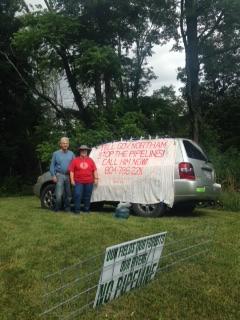
A True Miracle: What it Means to Visit Miracle Ridge
By Nancy Hugo
I knew I was under-informed about Atlantic Coast Pipeline issues before I visited Miracle Ridge, but I didn’t know how much I was until last weekend.
That’s when I met Bill and Lynn Limpert, along with Sam Wright, who is helping the them organize “camptivists” visiting  their property.
their property.
“Come,” was the Limpert’s invitation, “just to see where the pipeline will go.” There was no demand for action, no requirement to report on the experience. But you can’t visit a place like that without wanting to do something to oppose the pipeline.
As a “tree person,” I expected it to be tree impressions that remained strongest in my memory after the visit. Those impressions are rich: beautiful sugar maples — including one old “hub” tree that probably pre-dates European settlement — are among those that would be destroyed by the pipeline.
But the strongest impression I came away with has more to do with terrain than trees. It’s the topography of Miracle Ridge — its steep sides, rocky substrate, and thin soil, that makes it seem uniquely vulnerable to disturbance.
 And what a disturbance this would be. Clearcutting an area 125 feet wide and blasting that would reduce this fragile area to rubble.
And what a disturbance this would be. Clearcutting an area 125 feet wide and blasting that would reduce this fragile area to rubble.
And for what? To transport natural gas that isn’t needed in Virginia to the coast for sale overseas? To support fracking (which we know to be environmentally catastrophic) in West Virginia? To destroy private land for the profit of Dominion Power?
Knowing that it is I (and every other Dominion ratepayer in Virginia) who will be paying for this vast, unnecessary destruction adds to the horror of it.
Today, in Ashland, I had lunch with a group of activists opposing the pipeline. In their company, I felt even more embarrassed by my ignorance, but, inspired by Sam and the Limperts, at least now I’m not totally unaware of what’s happening. And I’m determined to do what I can to oppose the pipeline.
Sign today up to join “No Pipeline Summer: A Camp to Save the Limperts’ Land.“
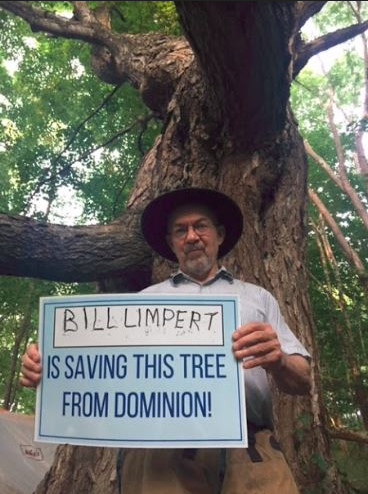
What CCAN Has Given Me
Written by Lauren Brown, CCAN 2018 Spring Intern
Since I’ve been a little kid, I’ve always been a nature lover. Many of my happiest and most memorable times growing up were when I was traversing, connecting with, and observing nature. As I have grown older, my feelings of love and responsibility for the Earth have become more clear and palpable. It was exciting to enter college and take on this responsibility in a new way. As an environmental politics & policy major at UMD, I was able to learn all about  environmental science, economics, law, and politics and share it with others.
environmental science, economics, law, and politics and share it with others.
I had some really amazing professors and mentors that helped support and empower me. Liz Lee from CCAN was one of those people.
Liz came to do a lobbying training at UMD and I was moved by her story of leaving her job as a government regulatory counsel to volunteer with CCAN, then join the staff at CCAN. She had experienced an awakening; that she wanted to do something more, for her legacy and for the world. She told me she wakes up every day and her purpose is clear.
We connected that night and I embarked on my journey as a CCAN intern.
As an advocate, one works in front of the scenes and behind the scenes. Everyone works as a unit. That’s how fracking bans are passed, people’s voices are heard, and miracles are made. It was a cool thing to be part of the team and to support each other. The main bill I worked on was the Clean Energy Jobs Act. This important bill will increase our renewable portfolio standard from 25 percent to 50 percent by 2030, providing thousands of new clean energy jobs. It also works to phase out incinerator incentives and provide support for minority, veteran and female-owned renewable energy businesses. I had lots of interesting tasks from setting up lobby appointments with legislators, making communications materials for constituents, leading lobbying training breakout groups, and tabling at student events. As I was a part of planning for crucial events to advance our bill, I felt fulfilled in that I could see the results of my hard work and the successful momentum we gained this legislative session.
The first event that I had the chance to participate in was the Clean Energy Jobs Act Rally in January. I felt immediately supported by over 150 volunteers and staff. There is something about just getting out there, being a part of something bigger than one’s self, and finding that strength in numbers.
This rally was especially striking because we had a parade of electric vehicles around the State Capitol. Each car was artfully decorated with campaign slogans, streamers, and hand-written signs. The parade was followed by speeches by impassioned community leaders and legislators; each so excited they were vying for time with the microphone. The location was just right and tons of government workers passed by; their attention sparked by all the activity. I made my goal in gathering petitions that day but I also made friends. I went home that day riding on the wings of hope. I felt joy in the camaraderie and meaning in the work we were doing.

Another event I helped with was a Clean Energy Jobs lobbying night in February in Annapolis. What a powerful swarming of our state legislators with CCAN and Maryland Climate Coalition volunteers! We had over 130 spirited, compassionate, knowledgeable frontrunners who were not afraid to speak their truth. This was especially exciting for me because I had never lobbied before. I was really touched by my delegates and senators from Montgomery County who wholeheartedly supported our bill and even participated in its creation. Gathering people together for lobbying is a good example of the steps we need to take to bring our state together, to spread pro-environmental inspiration, and to address climate change. I have also enjoyed educating the public and talking to regular citizen one-on-one about important issues. I am so grateful for having been part of CCAN and helping to contribute to this mission.
Although my spring internship ended, I have continued working with CCAN as a volunteer! It’s been fun tabling with other dedicated CCAN volunteers and interns this summer and helping out with the recent candidate forum in Charles County. It is exciting to see my impact in making the Clean Energy Jobs the priority environmental election issue for voters and candidates!

